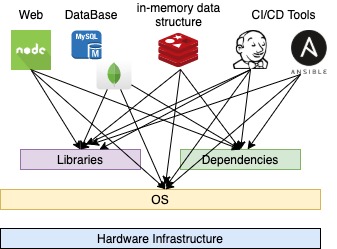

- Docker hyperkit cpu for mac#
- Docker hyperkit cpu install#
- Docker hyperkit cpu driver#
- Docker hyperkit cpu upgrade#
- Docker hyperkit cpu free#
The problem was that it couldn't reach a symlinked directory. (64B)Įrror: Permission denied apply2files - /usr/local/lib/docker/cli-plugins Removing: /Users/pilot/Library/Logs/Homebrew/gnutls. Removing: /Users/pilot/Library/Logs/Homebrew/lzo. Removing: /Users/pilot/Library/Caches/Homebrew/devspace-5.14.4.

Removing: /Users/pilot/Library/Caches/Homebrew/bdw-gc-8.0.4_2. Removing: /Users/pilot/Library/Caches/Homebrew/bash-5.1.8. => `brew cleanup` has not been run in the last 30 days, running now.
Docker hyperkit cpu install#
When I went to install something, homebrew attempted to do brew cleanup after 30 days. Issues After Switching Homebrew Cleanup Error

The same thing can be done with kubectl directly though. The drop down menu in Docker Desktop is a very convenient tool for switching between clusters. $ ssh -i ~/.minikube/machines/minikube/id_rsa ip) The verbose way, in case you need to login manually or use sftp or something. When using the hyperkit driver, you can access the VM if necessary. You can get the minikube ip with: $ minikube ipĪs a pro-tip if you need to just curl something, you can do this: $ docker run -d -p 8000:80 httpd Something important to know, when using -volume and -port it will be applied to the Hyperkit VM, not localhost like with Docker Desktop. minikube status > /dev/null & eval $(minikube docker-env) If you add this to your ~/.bashrc or ~/.bash_profile, it will automatically setup the docker environment variables for you when minikube is running, in new terminal sessions. This command does the environment setup for you, after which docker commands should just work. Minikube needs to be running and you need to use envirnment variables so that the docker cli tool can contact minikube. Then just do the start command as mentioned in the Running Minikube section. 💀 Removed all traces of the "minikube" cluster. It doesn't matter if minikube is running or not, you can issue the delete command.
Docker hyperkit cpu free#
If you need to stop minikube (to free up RAM or CPU), run this command. $ minikube statusĪnytime you need to start minikube back up, you don't need to set additional flags anymore $ minikube start You can check the status with this command if you're unsure if minikube is running or not.

$ kubectl -n kube-system wait -for=condition=ready -all pods -timeout=10m When you start with -cni=calico it might take some extra time for the CNI to become active. $ minikube start -addons=registry -cni=calico -driver=hyperkit -cpus=8 -memory=8g The first time you start minikube, you should specify any settings you desire. $ brew install minikube docker kubectl hyperkit Use brew to install the docker cli and minikube. In doing so, I've consolidated my notes as follows.
Docker hyperkit cpu upgrade#
Docker hyperkit cpu driver#
Docker hyperkit cpu for mac#
If empty, disables Hyperkit VPNKitSock, if ‘auto’ uses Docker for Mac VPNKit connection, otherwise uses the specified VSock


 0 kommentar(er)
0 kommentar(er)
